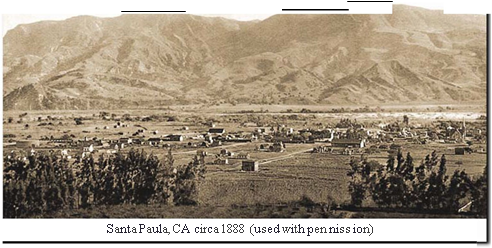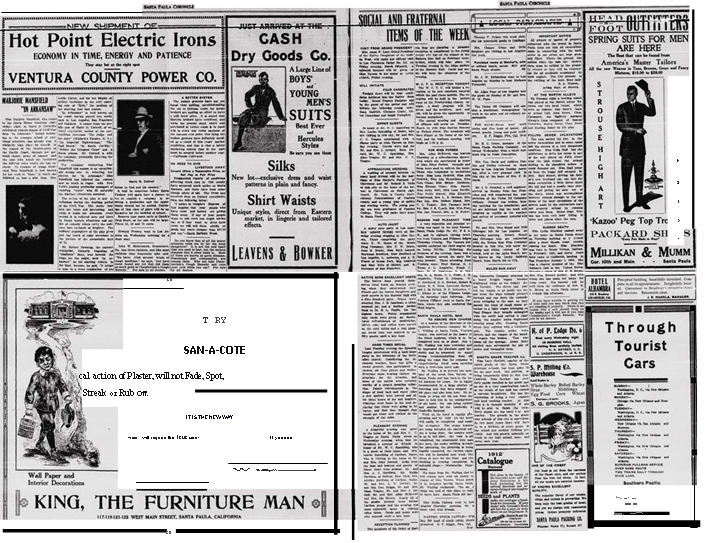
Background
Organized in 1977, the Santa Paula Historical Society of Santa Paula, California is dedicated to preserving, protecting and perpetuating the history of the town and the surrounding area. Its founding eleven Directors were descendants of pioneers or long-time residents, and many of them continue to serve the Society today.
When the Santa Paula Historical Society decided to convert its microfilm collection of local newspapers to a searchable digital format, President Mary Alice Orcutt Henderson contacted Creekside Digital. Prior to committing to a project, SPHS sent Creekside its oldest and most difficult to read roll of microfilm in the collection, and Creekside provided free samples in order to demonstrate both the quality of the microfilm scans and the accuracy of the Optical Character Recognition.
“Having experienced our library’s microfilm machine’s extremely poor quality and clarity in a printed page, my skepticism continued until receiving the free samples from Creekside Digital. I was astounded! On the screen the images were easily enlarged for readability; the printed page was equally easily read. More importantly, the whole process (of converting SPHS’s microfilm) was facilitated. I was sold!”
Mary Alice Orcutt Henderson
President, Santa Paula Historical Society
The Process
At a Glance
- 240 rolls of 35mm newspaper microfilm spanning 110 years of history
- Digitized at 300dpi /256-color grayscale
- Optical Character Recognition output to multi-page PDF files
- Full text Index creation allows for searching across multiple years of content
Creekside Digital uses high speed rollfilm scanners which utilize latest-generation technology including fiber-optic lighting, Nikkon lenses, CCD cameras and cutting-edge microprocessor designs in order to provide previously unachievable image quality. Combined with “ribbon scanning” – a process by which a roll of microfilm is scanned in its entirety, with frame detection, quality control and image file output occurring after the initial film capture – the potential for common scanning problems including improperly cropped images and skipped frames is eliminated.
Once SPHS’s microfilm rolls were scanned, text was extracted from the raw images using Optical Character Recognition . OCR creates an invisible layer of digital text behind the image of the original newspaper page which may be copied, pasted, and searched like any other digital text. Multi-page PDF files (one page for each frame on the original microfilm ) were then output from the OCR creation process. Finally, a Full text Index was created for each roll of film to allow patrons of the Santa Paula Historical Society to quickly search the newspapers for surnames and place-names specific to their region – a boon to historians and genealogist s alike.
Results
”To finance our project, the Society and the (Santa Paula ) Library jointly shared the expenses. Now both organizations have a full set of the scanned newspapers to offer to the interested public. Yet, better than the product is the willingness of Creekside Digital to assist with any questions – no matter how simple or complex. All in all, it was money well spent for both our community library and the nonprofit historical society.”
Mary Alice Orcutt Henderson
President, Santa Paula Historical Society

Santa Paula Chronicle Weekly, 1912 (used with permission)
To learn more about Creekside Digital visit: www.creeksidedigital.com

